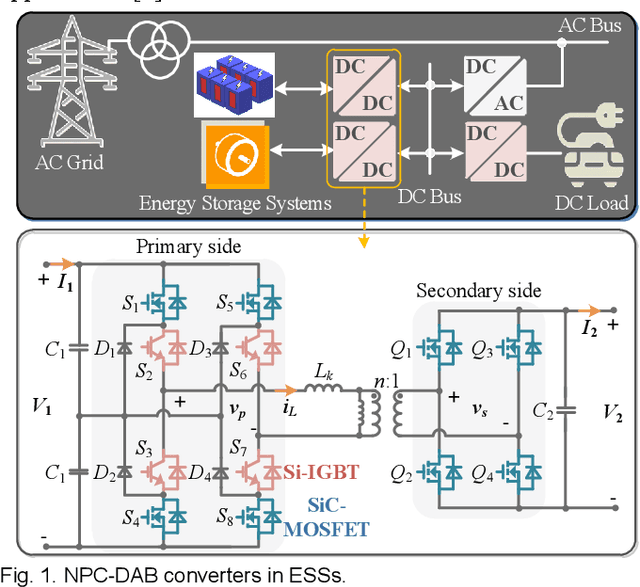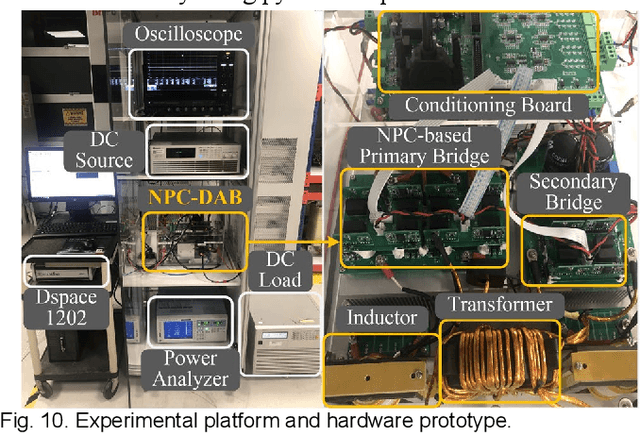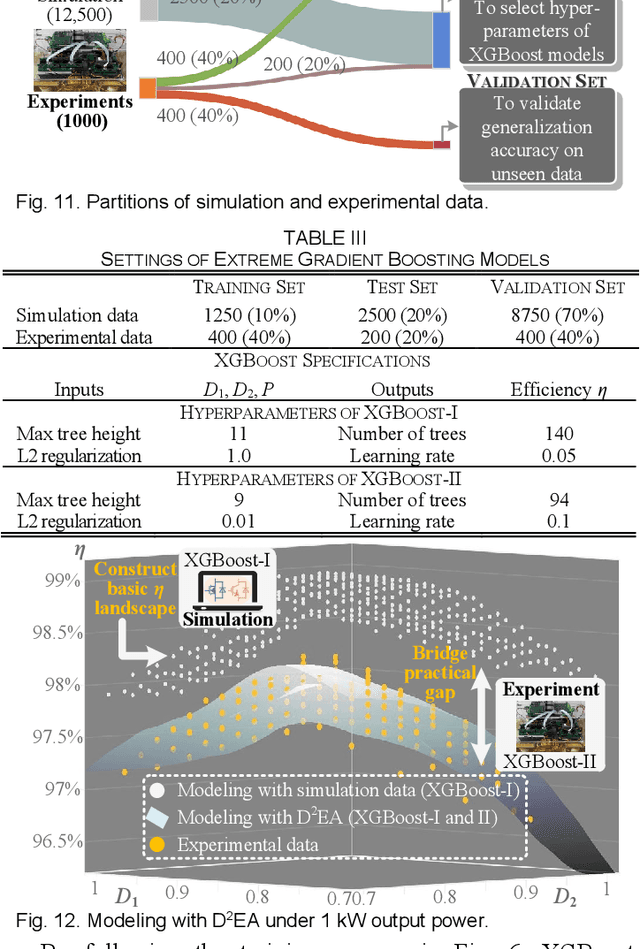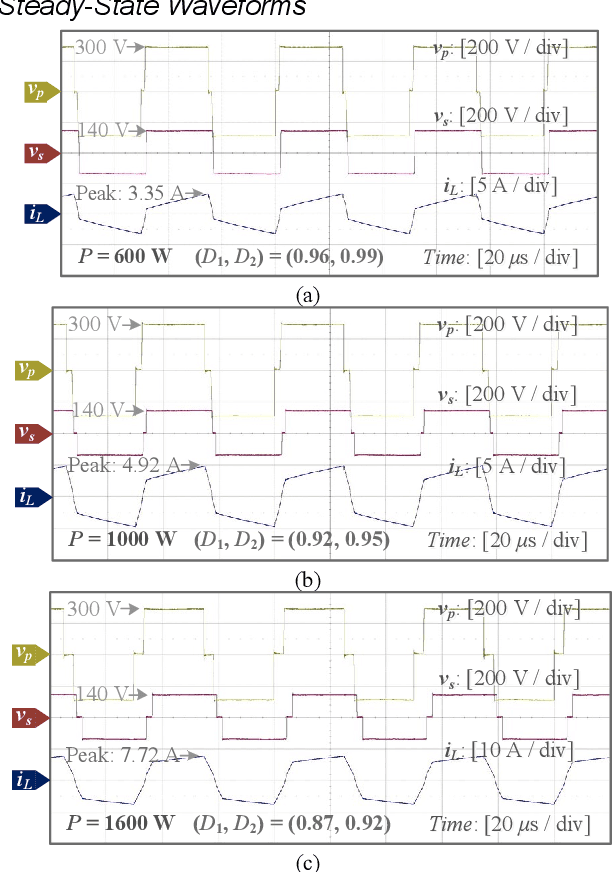Fanfan Lin
AI Explainability for Power Electronics: From a Lipschitz Continuity Perspective
Jan 17, 2025Abstract:Lifecycle management of power converters continues to thrive with emerging artificial intelligence (AI) solutions, yet AI mathematical explainability remains unexplored in power electronics (PE) community. The lack of theoretical rigor challenges adoption in mission-critical applications. Therefore, this letter proposes a generic framework to evaluate mathematical explainability, highlighting inference stability and training convergence from a Lipschitz continuity perspective. Inference stability governs consistent outputs under input perturbations, essential for robust real-time control and fault diagnosis. Training convergence guarantees stable learning dynamics, facilitating accurate modeling in PE contexts. Additionally, a Lipschitz-aware learning rate selection strategy is introduced to accelerate convergence while mitigating overshoots and oscillations. The feasibility of the proposed Lipschitz-oriented framework is demonstrated by validating the mathematical explainability of a state-of-the-art physics-in-architecture neural network, and substantiated through empirical case studies on dual-active-bridge converters. This letter serves as a clarion call for the PE community to embrace mathematical explainability, heralding a transformative era of trustworthy and explainable AI solutions that potentially redefine the future of power electronics.
Physics-Informed LLM-Agent for Automated Modulation Design in Power Electronics Systems
Nov 21, 2024



Abstract:LLM-based autonomous agents have demonstrated outstanding performance in solving complex industrial tasks. However, in the pursuit of carbon neutrality and high-performance renewable energy systems, existing AI-assisted design automation faces significant limitations in explainability, scalability, and usability. To address these challenges, we propose LP-COMDA, an LLM-based, physics-informed autonomous agent that automates the modulation design of power converters in Power Electronics Systems with minimal human supervision. Unlike traditional AI-assisted approaches, LP-COMDA contains an LLM-based planner that gathers and validates design specifications through a user-friendly chat interface. The planner then coordinates with physics-informed design and optimization tools to iteratively generate and refine modulation designs autonomously. Through the chat interface, LP-COMDA provides an explainable design process, presenting explanations and charts. Experiments show that LP-COMDA outperforms all baseline methods, achieving a 63.2% reduction in error compared to the second-best benchmark method in terms of standard mean absolute error. Furthermore, empirical studies with 20 experts conclude that design time with LP-COMDA is over 33 times faster than conventional methods, showing its significant improvement on design efficiency over the current processes.
Data-Driven Modeling with Experimental Augmentation for the Modulation Strategy of the Dual-Active-Bridge Converter
Aug 03, 2023



Abstract:For the performance modeling of power converters, the mainstream approaches are essentially knowledge-based, suffering from heavy manpower burden and low modeling accuracy. Recent emerging data-driven techniques greatly relieve human reliance by automatic modeling from simulation data. However, model discrepancy may occur due to unmodeled parasitics, deficient thermal and magnetic models, unpredictable ambient conditions, etc. These inaccurate data-driven models based on pure simulation cannot represent the practical performance in physical world, hindering their applications in power converter modeling. To alleviate model discrepancy and improve accuracy in practice, this paper proposes a novel data-driven modeling with experimental augmentation (D2EA), leveraging both simulation data and experimental data. In D2EA, simulation data aims to establish basic functional landscape, and experimental data focuses on matching actual performance in real world. The D2EA approach is instantiated for the efficiency optimization of a hybrid modulation for neutral-point-clamped dual-active-bridge (NPC-DAB) converter. The proposed D2EA approach realizes 99.92% efficiency modeling accuracy, and its feasibility is comprehensively validated in 2-kW hardware experiments, where the peak efficiency of 98.45% is attained. Overall, D2EA is data-light and can achieve highly accurate and highly practical data-driven models in one shot, and it is scalable to other applications, effortlessly.
* 11 pages
Particle swarm optimization with state-based adaptive velocity limit strategy
Aug 02, 2023Abstract:Velocity limit (VL) has been widely adopted in many variants of particle swarm optimization (PSO) to prevent particles from searching outside the solution space. Several adaptive VL strategies have been introduced with which the performance of PSO can be improved. However, the existing adaptive VL strategies simply adjust their VL based on iterations, leading to unsatisfactory optimization results because of the incompatibility between VL and the current searching state of particles. To deal with this problem, a novel PSO variant with state-based adaptive velocity limit strategy (PSO-SAVL) is proposed. In the proposed PSO-SAVL, VL is adaptively adjusted based on the evolutionary state estimation (ESE) in which a high value of VL is set for global searching state and a low value of VL is set for local searching state. Besides that, limit handling strategies have been modified and adopted to improve the capability of avoiding local optima. The good performance of PSO-SAVL has been experimentally validated on a wide range of benchmark functions with 50 dimensions. The satisfactory scalability of PSO-SAVL in high-dimension and large-scale problems is also verified. Besides, the merits of the strategies in PSO-SAVL are verified in experiments. Sensitivity analysis for the relevant hyper-parameters in state-based adaptive VL strategy is conducted, and insights in how to select these hyper-parameters are also discussed.
Feature-aware conditional GAN for category text generation
Aug 02, 2023Abstract:Category text generation receives considerable attentions since it is beneficial for various natural language processing tasks. Recently, the generative adversarial network (GAN) has attained promising performance in text generation, attributed to its adversarial training process. However, there are several issues in text GANs, including discreteness, training instability, mode collapse, lack of diversity and controllability etc. To address these issues, this paper proposes a novel GAN framework, the feature-aware conditional GAN (FA-GAN), for controllable category text generation. In FA-GAN, the generator has a sequence-to-sequence structure for improving sentence diversity, which consists of three encoders including a special feature-aware encoder and a category-aware encoder, and one relational-memory-core-based decoder with the Gumbel SoftMax activation function. The discriminator has an additional category classification head. To generate sentences with specified categories, the multi-class classification loss is supplemented in the adversarial training. Comprehensive experiments have been conducted, and the results show that FA-GAN consistently outperforms 10 state-of-the-art text generation approaches on 6 text classification datasets. The case study demonstrates that the synthetic sentences generated by FA-GAN can match the required categories and are aware of the features of conditioned sentences, with good readability, fluency, and text authenticity.
Artificial-Intelligence-Based Hybrid Extended Phase Shift Modulation for the Dual Active Bridge Converter with Full ZVS Range and Optimal Efficiency
Aug 01, 2023Abstract:Dual active bridge (DAB) converter is the key enabler in many popular applications such as wireless charging, electric vehicle and renewable energy. ZVS range and efficiency are two significant performance indicators for DAB converter. To obtain the desired ZVS and efficiency performance, modulation should be carefully designed. Hybrid modulation considers several single modulation strategies to achieve good comprehensive performance. Conventionally, to design a hybrid modulation, harmonic approach or piecewise approach is used, but they suffer from time-consuming model building process and inaccuracy. Therefore, an artificial-intelligence-based hybrid extended phase shift (HEPS) modulation is proposed. Generally, the HEPS modulation is developed in an automated fashion, which alleviates cumbersome model building process while keeping high model accuracy. In HEPS modulation, two EPS strategies are considered to realize optimal efficiency with full ZVS operation over entire operating ranges. Specifically, to build data-driven models of ZVS and efficiency performance, extreme gradient boosting (XGBoost), which is a state-of-the-art ensemble learning algorithm, is adopted. Afterwards, particle swarm optimization with state-based adaptive velocity limit (PSO-SAVL) is utilized to select the best EPS strategy and optimize modulation parameters. With 1 kW hardware experiments, the feasibility of HEPS has been verified, achieving optimal efficiency with maximum of 97.1% and full-range ZVS operation.
Artificial-Intelligence-Based Triple Phase Shift Modulation for Dual Active Bridge Converter with Minimized Current Stress
Aug 01, 2023Abstract:The dual active bridge (DAB) converter has been popular in many applications for its outstanding power density and bidirectional power transfer capacity. Up to now, triple phase shift (TPS) can be considered as one of the most advanced modulation techniques for DAB converter. It can widen zero voltage switching range and improve power efficiency significantly. Currently, current stress of the DAB converter has been an important performance indicator when TPS modulation is applied for smaller size and higher efficiency. However, to minimize the current stress when the DAB converter is under TPS modulation, two difficulties exist in analysis process and realization process, respectively. Firstly, three degrees of modulation variables in TPS modulation bring challenges to the analysis of current stress in different operating modes. This analysis and deduction process leads to heavy computational burden and also suffers from low accuracy. Secondly, to realize TPS modulation, if a lookup table is adopted after the optimization of modulation variables, modulation performance will be unsatisfactory because of the discrete nature of lookup table. Therefore, an AI-based TPS modulation (AI-TPSM) strategy is proposed in this paper. Neural network (NN) and fuzzy inference system (FIS) are utilized to deal with the two difficulties mentioned above. With the proposed AI-TPSM, the optimization of TPS modulation for minimized current stress will enjoy high degree of automation which can relieve engineers' working burden and improve accuracy. In the end of this paper, the effectiveness of the proposed AI-TPSM has been experimentally verified with a 1 kW prototype.
 Add to Chrome
Add to Chrome Add to Firefox
Add to Firefox Add to Edge
Add to Edge